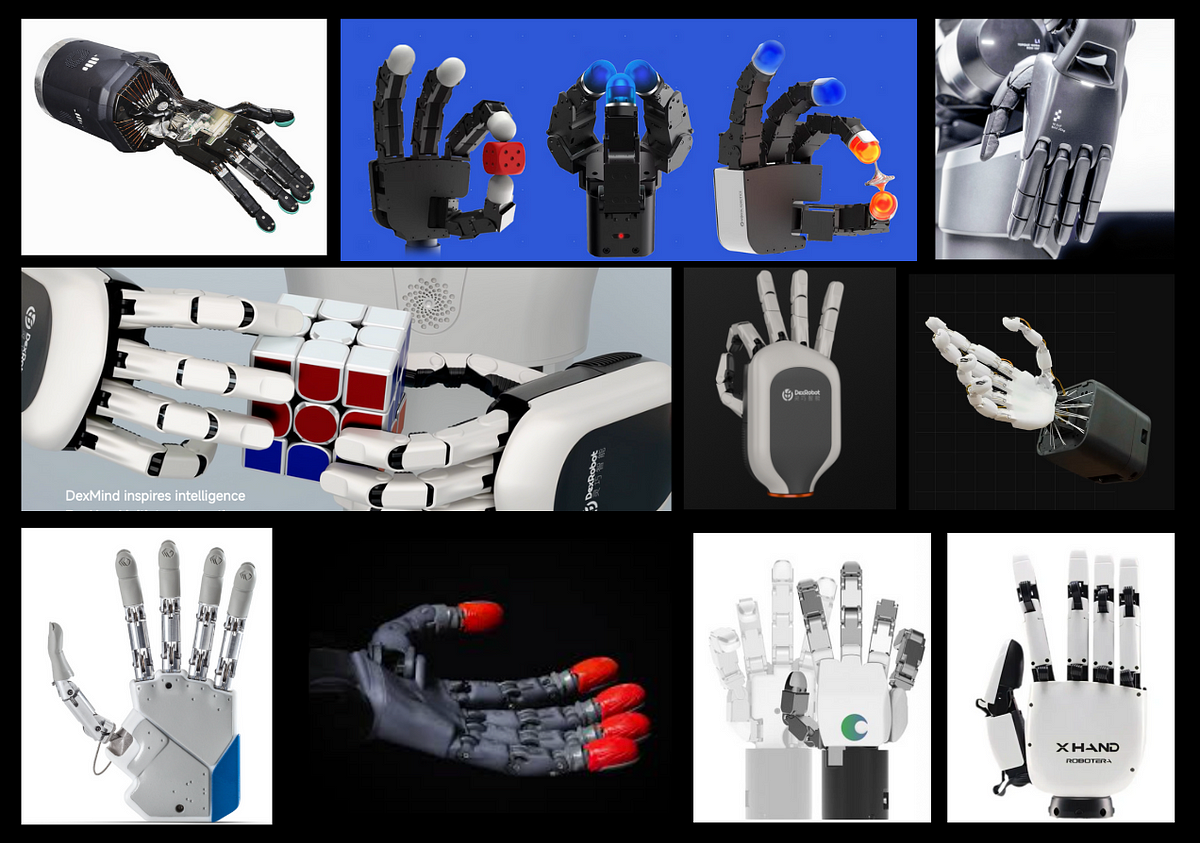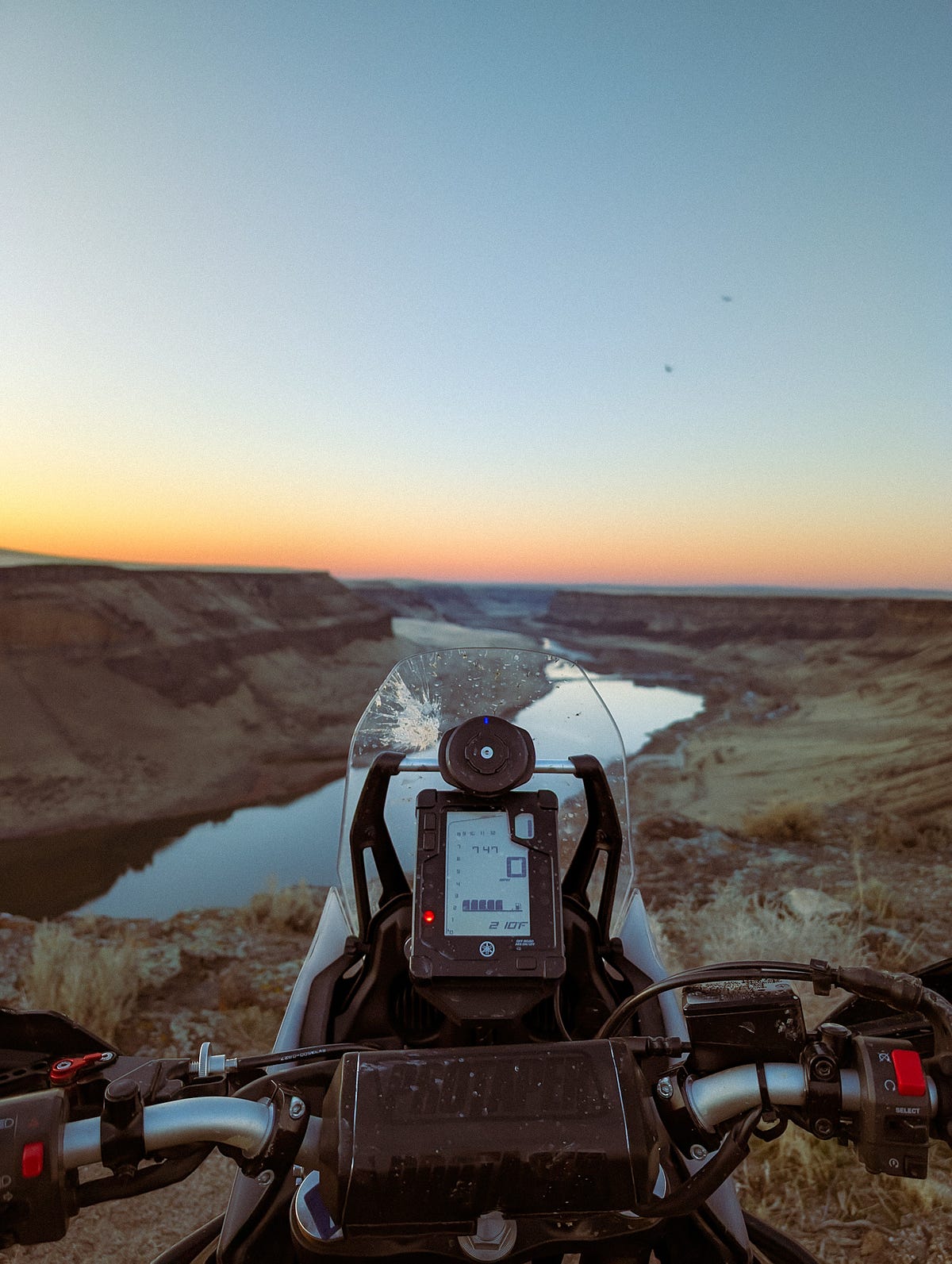Robotics News
Mit
1w
190

Image Credit: Mit
Robotic probe quickly measures key properties of new materials
- MIT researchers develop robotic probe to rapidly measure photoconductance in new semiconductor materials.
- The autonomous system speeds up research and utilizes machine learning to guide decision making.
- The probe conducts over 3,000 unique measurements in 24 hours, aiding material discovery.
Read Full Article
11 Likes
Medium
1w
144

Image Credit: Medium
19 Robotic Hands Startups to Watch
- Building a hand with human-like dexterity remains a challenge for robotics and automation systems.
- Key features for a great robot hand include high degrees of freedom, tactile feedback, sensors, and AI-based control systems.
- Recent advancements in hardware, tactile sensing, and AI have led to a wave of startups developing sensor-enabled, AI-powered manipulation platforms.
- Numerous advanced robotic hands are available today, with varying degrees of freedom, unique features, and applications in research labs, companies, and humanoid robotics.
Read Full Article
8 Likes
The Robot Report
1w
156

SEW-EURODRIVE now assembles planetary gear units in the U.S.
- SEW-EURODRIVE has expanded its U.S. manufacturing capabilities by introducing local assembly of P2.e planetary gear units in Wellford, S.C., reducing lead times significantly.
- The P2.e series offers compact and powerful gear performance, designed for integration into high-demand systems, with a torque range of 24.8 kNm to 124 kNm.
- Key features of the series include high thermal energy, durability with a direct bearing design, flexibility in motor mounting, and a wide gear ratio and torque range.
- SEW-EURODRIVE's new assembly capability aims to enhance efficiency and sustainability in heavy-duty industries like steel, oil and gas, and power generation, serving the North American market with faster project turnaround.
Read Full Article
9 Likes
Pymnts
1w
23

Image Credit: Pymnts
AI Models and Tools: OpenAI Enables Creation of Shopify AI Assistants
- OpenAI has introduced a method for retailers to craft AI shopping assistants in Shopify easily, eliminating the need for authentication.
- Developers can now link the Storefront Managed Compute Platform (MCP) server to the OpenAI Responses API to create agents that can assist with product searches and checkout processes.
- OpenAI's move aligns with its strategy to enhance shopping capabilities, competing with companies like Perplexity offering similar AI chatbot solutions, including one-click checkout features.
- Google has launched Gemini Robotics On-Device, a vision-language-action model designed for robots to operate without cloud connectivity, while Amazon has introduced DeepFleet, an AI model to optimize movement coordination in warehouses.
Read Full Article
1 Like
Discover more
The Robot Report
1w
93

How to Set Up a Planetary Gear Motion with SOLIDWORKS
- Learn to set up a planetary gear assembly in SOLIDWORKS.
- Insert components like planet gears, sun gear, and ring gear.
- Mate different parts and create configurations for three modes of movement.
- Explore more SOLIDWORKS features and contact Hawk Ridge Systems for assistance.
Read Full Article
5 Likes
Eu-Startups
1w
293

Swiss robotics company Nautica Technologies raise €3.4 million for its underwater robots
- Swiss robotics startup Nautica Technologies raises €3.4 million to commercialize its underwater hull maintenance technology.
- Funding round led by b2venture with participation from angel investors and partners to support commercial deployments.
- Nautica's autonomous underwater robots aim to reduce fuel consumption, combat biofouling, and improve vessel efficiency.
- The company's technology offers proactive hull maintenance, potentially leading to significant fuel savings and environmental impact reduction in the maritime industry.
Read Full Article
17 Likes
The Robot Report
1w
293

Intuitive Surgical obtains CE mark for da Vinci 5 robot
- Intuitive Surgical's da Vinci 5 Surgical System receives CE mark approval for adult and pediatric use in Europe.
- The da Vinci 5 robot offers enhancements for minimally invasive endoscopic procedures across various medical fields.
- Features of the da Vinci 5 system include advanced surgical senses, operational efficiency, and actionable insights for better patient outcomes.
- Intuitive Surgical continues to expand its offerings globally, with clearances from regulatory bodies, such as the FDA, for its robotic systems.
Read Full Article
17 Likes
The Robot Report
1w
200

Pittsburgh Robotics Network launches Deep Tech Institute for Leadership and Innovation
- The Pittsburgh Robotics Network launched the Deep Tech Institute for Leadership and Innovation (DTI) to provide technical leadership development for deep tech companies' staff.
- The Deep Tech Institute aims to strengthen robotics, artificial intelligence, and advanced technology workforces by investing in talent to commercialize breakthrough technologies.
- The institute offers a two-tiered approach focusing on Emerging Leaders for early-career technical professionals and Senior Leaders for internal technical leaders in the sector.
- PRN plans to introduce programs to equip robotics and AI company employees with leadership skills for managing teams, aligning technical efforts with business strategy, and driving sustainable growth.
Read Full Article
12 Likes
Eu-Startups
1w
149

British robotics company AssetCool raises €11.5 million to scale rapid robotic grid upgrade technology globally
- Leeds-based AssetCool, a DeepTech company, raised €11.5 million in a Series A funding round to scale its proprietary robotics technology globally.
- The funding round was oversubscribed and led by Energy Impact Partners, with participation from other investors including Extantia Capital and Taronga Group.
- AssetCool focuses on innovating robotics and coatings for power lines, aiming to enhance grid efficiency and resilience.
- The company's technology increases power line capacity through the application of thermal-management nanomaterials, offering a cost-effective solution to address grid congestion.
Read Full Article
8 Likes
Medium
1w
246

Image Credit: Medium
From Mountain Trails to Machine Intelligence:
- Machine intelligence advances rapidly, prompting reflection on ethical implications and human reliance.
- AI systems now work collaboratively in modular, self-assembling units for efficient problem-solving.
- Future autonomous drones in search and rescue will prioritize tasks intelligently for optimal outcomes.
- Challenges ahead include trust in AI decision-making, ethical considerations, and the importance of explainability.
Read Full Article
13 Likes
The Robot Report
1w
652

ABB updates IRB 1200 line, adds 3 robot families for China
- ABB Robotics launches updated IRB 1200 robot line for precision and efficiency.
- New robot families tailored for various automation needs introduced in China.
- The robots offer high-speed, high-precision applications, speed, collaboration, and efficiency.
- ABB invests in Chinese operations to meet growing demand for user-friendly solutions.
Read Full Article
15 Likes
The Robot Report
1w
34

Galbot picks up $153M to commercialize G1 semi-humanoid
- Galaxy General Robot Co., also known as Galbot, raises $153 million to commercialize its G1 semi-humanoid robot.
- The G1 robot is designed to work in various environments like pharmacies and can automate inventory, replenishment, delivery, and packaging.
- Galbot has developed proprietary vision-language-action models (VLAs) like GraspVLA and GroceryVLA to enhance robot capabilities in retail settings.
- Investors in Galbot's funding round include CATL, Puquan Capital, China Development Bank, Qiming Venture Partners, and others, with a focus on collaboration and application development.
Read Full Article
2 Likes
The Robot Report
1w
364

Luminous gets funding to bring LUMI solar construction robot to Australia
- Luminous Robotics receives funding from the Australian government for LUMI solar construction robot.
- LUMI automates solar panel installation process, assists existing workforces, and improves productivity and safety.
- The project aims to reduce solar farm costs and drive global adoption of LUMI technology.
Read Full Article
6 Likes
The Robot Report
1w
304

Top 10 robotics developments of June 2025
- Hexagon launched AEON humanoid robot for industrial applications to address labor shortages.
- Coco Robotics raised $80M for scaling sidewalk delivery robots and enhancing AI platform.
- Meta introduced V-JEPA 2 world model using raw video to train robots for navigation.
- Gecko Robotics reached unicorn status with $125M in Series D funding for infrastructure robots.
Read Full Article
18 Likes
The Robot Report
1w
265

Farmer-first future: Agtonomy’s approach to smart agriculture
- Agtonomy's CEO, Tim Bucher, stresses the importance of understanding farming and partnerships for effective agricultural robotics.
- Captron's general manager, Sean Walters, emphasizes the innovative sensor technologies at 2025 Robotics Summit & Expo.
- Boston Dynamics' Spot robots performed on NBC's AGT, showcasing their capabilities despite technical challenges.
- Tesla launches Robotaxi service in Austin with initial challenges, while Hexagon introduces AEON humanoid robot for industrial applications.
Read Full Article
15 Likes
For uninterrupted reading, download the app